7 Powerful Ways Urns Carry the Symbolism of Life, Death, and Remembrance in Cremation Ashes
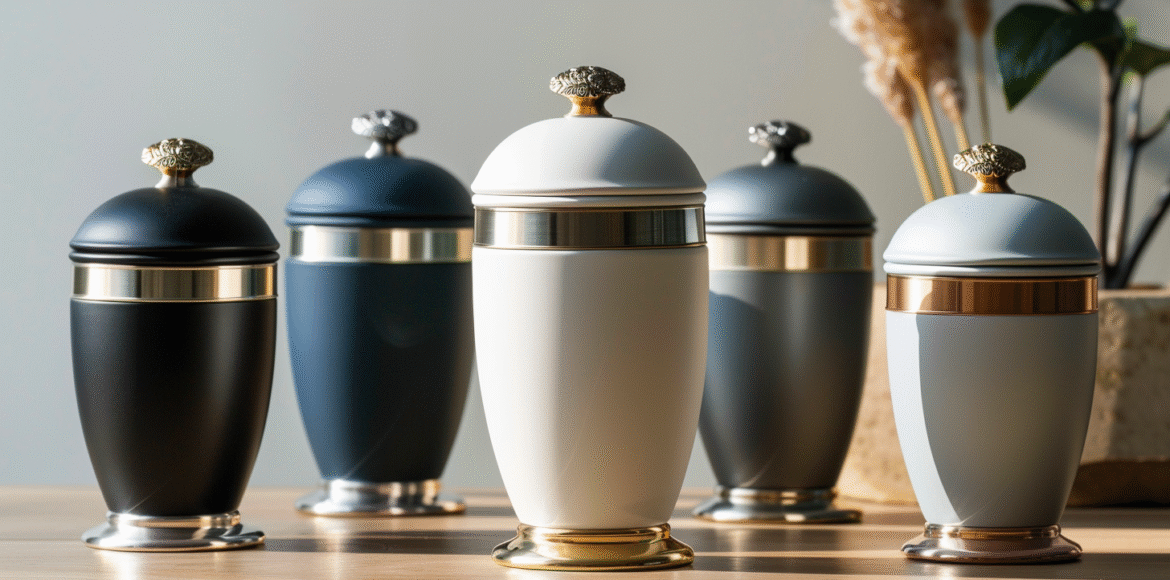
Introduction: More Than Just a Vessel
In a world that often rushes through the final rites of life, urns stand still—silent and still, but not empty. Whether cradled in your hands, placed upon a mantel, or buried beneath the earth, these vessels carry the cremation ashes of our loved ones and something even more sacred: meaning.
Urns, in their quiet presence, speak a language of remembrance. They are containers of grief, yes—but also of love, legacy, and profound symbolism. The moment someone selects an urn, they’re not just buying an object—they’re choosing how to honor a soul.
At Dei Gratia Urns, we often hear from families who say, “This isn’t just for the ashes—it’s for our hearts.” That phrase has stuck with us.
In this article, we explore the emotional and symbolic significance of urns, not just as memorials but as symbols rooted in history, culture, and personal healing. This is not about sales—it’s about storytelling.
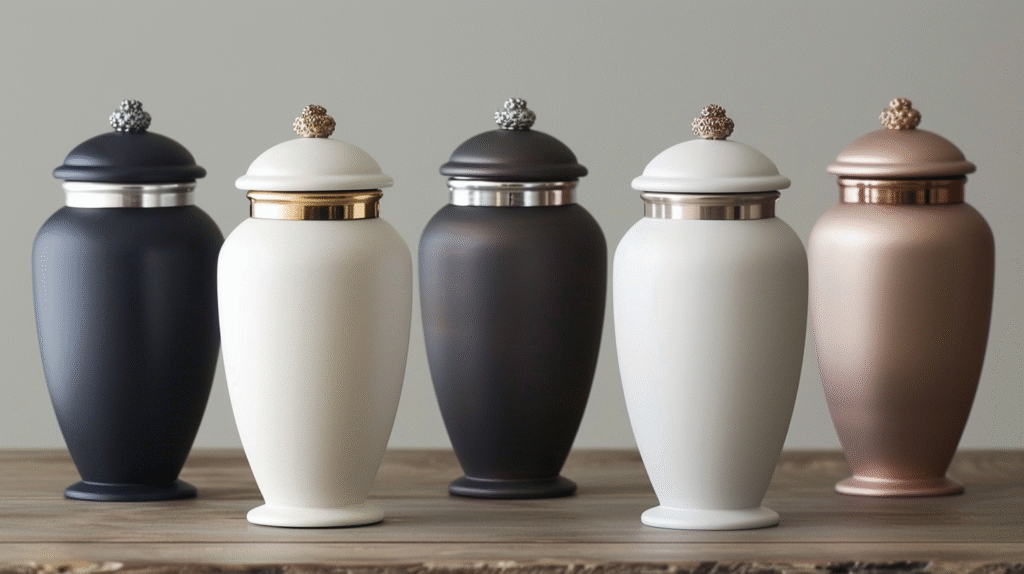
1. The Ancient Echo: Urns in History and Rituals
Long before modern cremation became mainstream, urns existed as symbols of transformation. The earliest known cremation urns date back to the Bronze Age, around 1300 BCE, in parts of Europe and Asia.
In Ancient Greece and Rome, urns were used during funerary rituals to hold the ashes of fallen soldiers and nobility. These urns weren’t just containers—they were ornate, sacred, often engraved with messages or painted with mythological scenes.
- Read more about Ancient Roman funerary art.
- Discover the origins of cremation in Greece.
This reverence echoes in today’s urns. Even now, people choose urns that reflect a loved one’s faith, values, career, or character—be it a Tree of Life, a military insignia, or a simple, pure white marble finish.
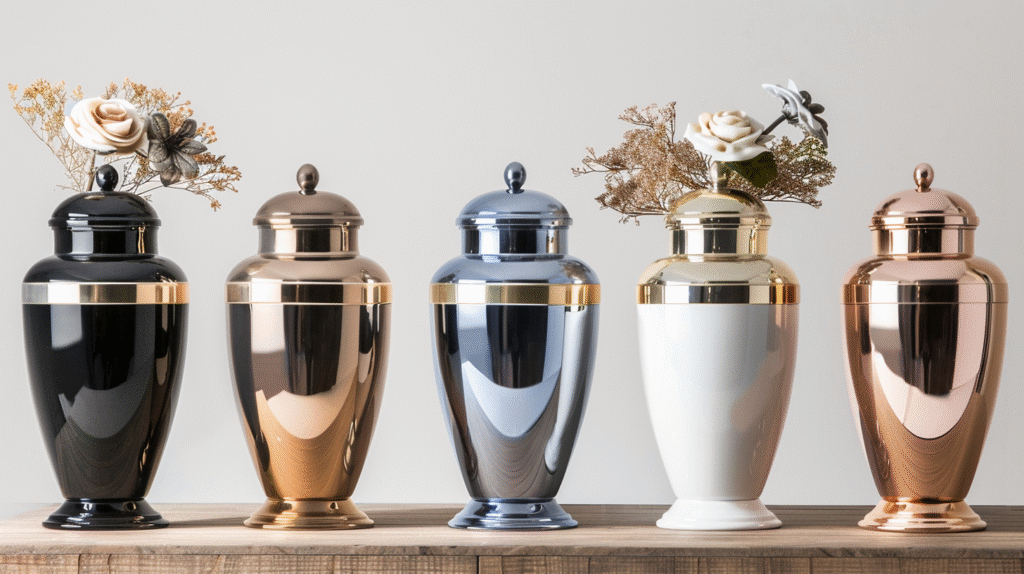
2. Symbolism of the Urn Shape: Circle, Containment, Eternity
Have you ever looked at an urn and wondered why so many of them are shaped like vases, or why the lid matters?
The shape itself holds symbolism:
- The round base and body represent continuity and eternity—a life that cycles on.
- The lid symbolizes closure, a final act of love in keeping a soul protected.
In Buddhist and Hindu traditions, the urn represents the cycle of samsara—birth, death, and rebirth. That’s why many Asian urns include lotus flower engravings or chakra designs.
Symbolically, the urn offers a paradox: It is both an end and a beginning.
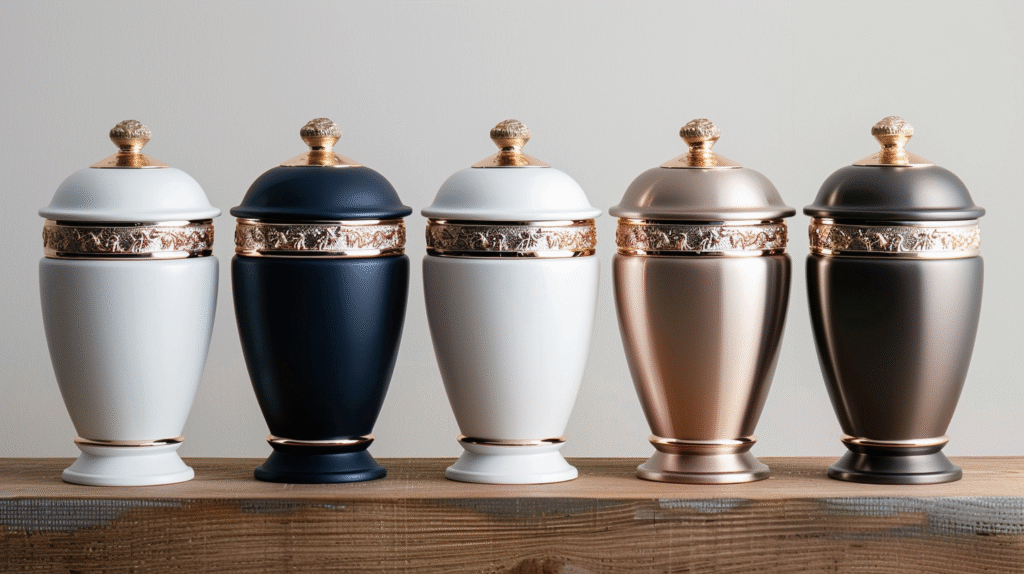
3. Color Psychology: What the Colors of Urns Mean
Choosing a color for an urn isn’t just about design—it’s about the emotional language of color.
- White: purity, peace, eternal rest (common in Christian and Eastern traditions)
- Black: mourning, power, dignity
- Blue: serenity, reflection, spirituality
- Green: nature, rebirth, healing
- Gold: divinity, memory, celebration of life
Many families at Dei Gratia Urns tell us that when they saw “the color,” they just knew. One woman told us her mother loved lavender fields—and when she saw a lavender-hued urn, she broke down in tears. “It felt like she was speaking to me,” she said.
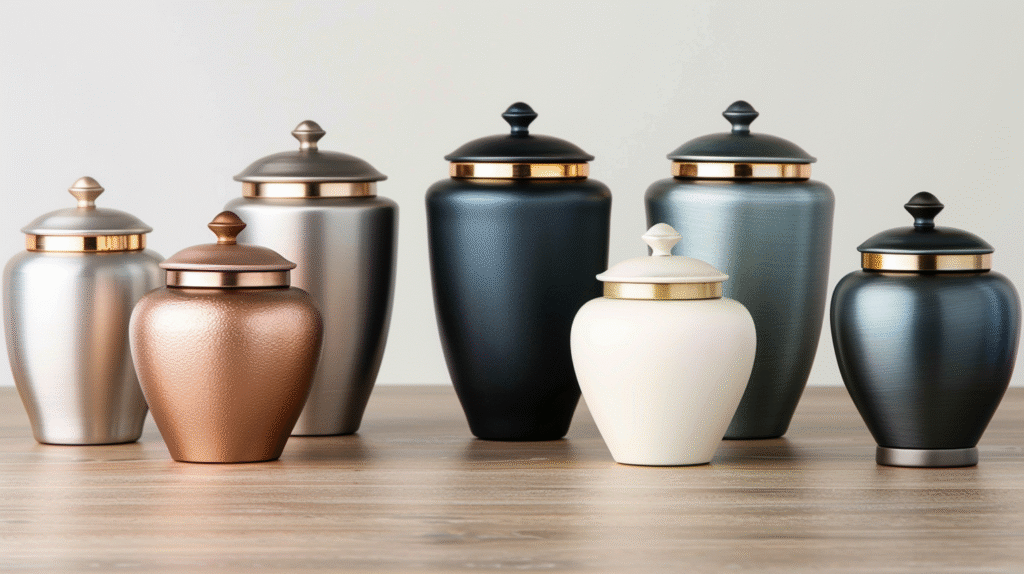
4. Materials Matter: Why Wood, Metal, and Marble Speak Differently
The material of an urn contributes to its symbolic meaning:
- Wood: represents the return to nature, humility, grounding
Learn more: Wood in religious symbolism - Metal (like brass or aluminum): durability, permanence, strength
- Ceramic/Porcelain: fragility, artistry, vulnerability
- Marble or Stone: endurance, sacredness, connection to earth
At Dei Gratia Urns, we’ve had families select wooden urns because their loved one was a forest ranger, or metal urns engraved with anchors for Navy veterans. These are more than materials—they’re metaphors.
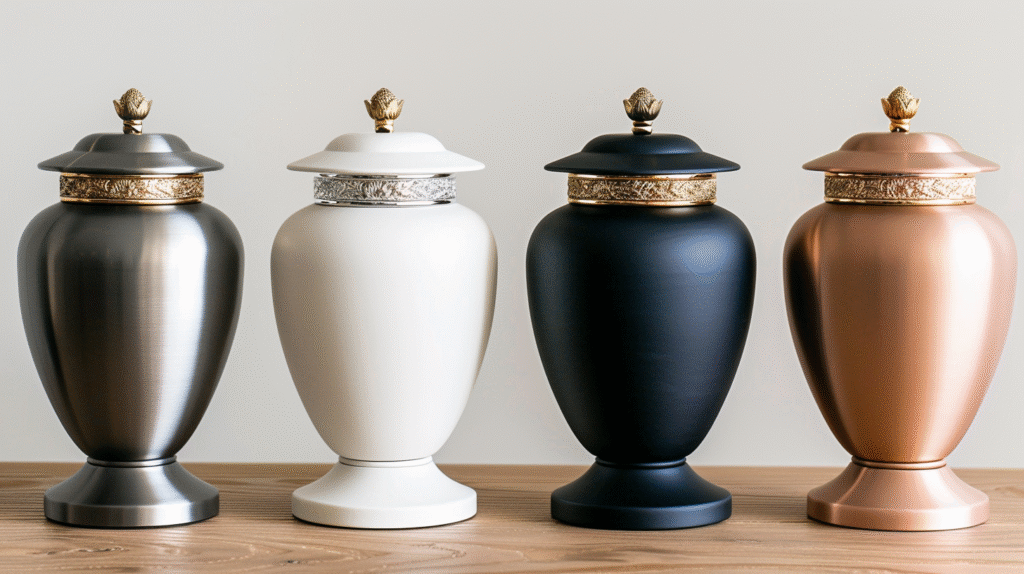
5. Personalization: When a Name Becomes a Legacy
Engraving a name, date, or message onto an urn isn’t just personalization—it’s immortalization. It transforms an object into a memorial heirloom.
Some families go further:
- Fingerprint engravings
- Poems etched in calligraphy
- Custom artwork that represents a hobby (like fishing, music, or motorcycles)
Every story is unique. A Dei Gratia customer once commissioned an urn that looked like a grand piano for her late father, a jazz pianist. “It wasn’t just an urn,” she said. “It was the sound of him.”
This echoes the legacy-making done in Victorian mourning art, where hair was woven into brooches or kept in lockets.
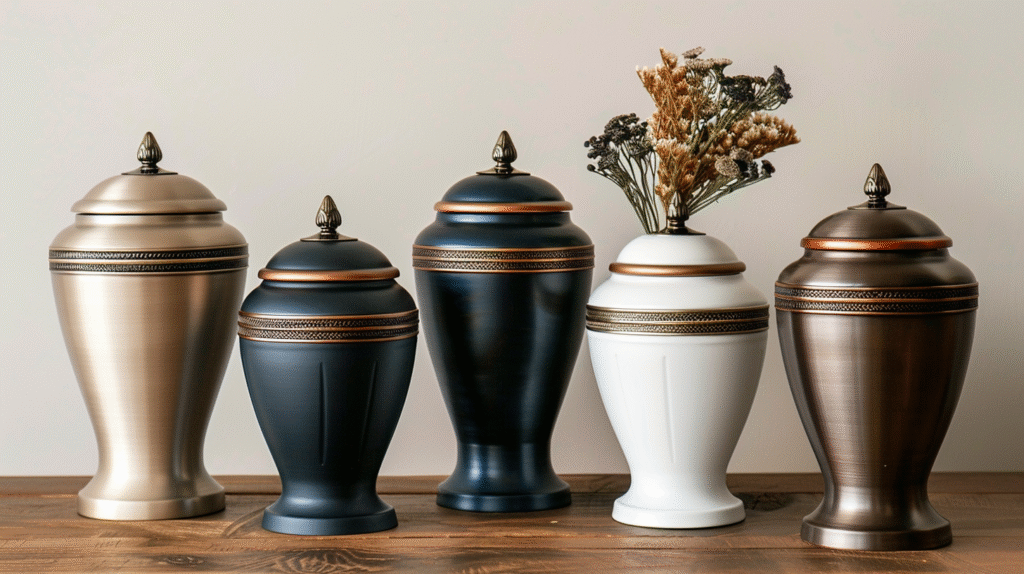
6. Keepsake Urns: Miniature Symbols, Maximum Emotion
Not every family member gets the full urn—and not every story needs one.
That’s where keepsake urns come in.
These smaller urns, often the size of a palm or smaller, are used to share ashes among loved ones or keep a portion close—on a nightstand, in a locket, or even inside a pendant.
The symbolism here is deeply emotional:
- Connection: A piece of your loved one stays physically close.
- Unity: Family members stay spiritually connected even in grief.
- Healing: Physical tokens of love support emotional closure.
In many cultures—like Japanese ancestor veneration—a portion of ashes remains in the home for months or years before final interment.
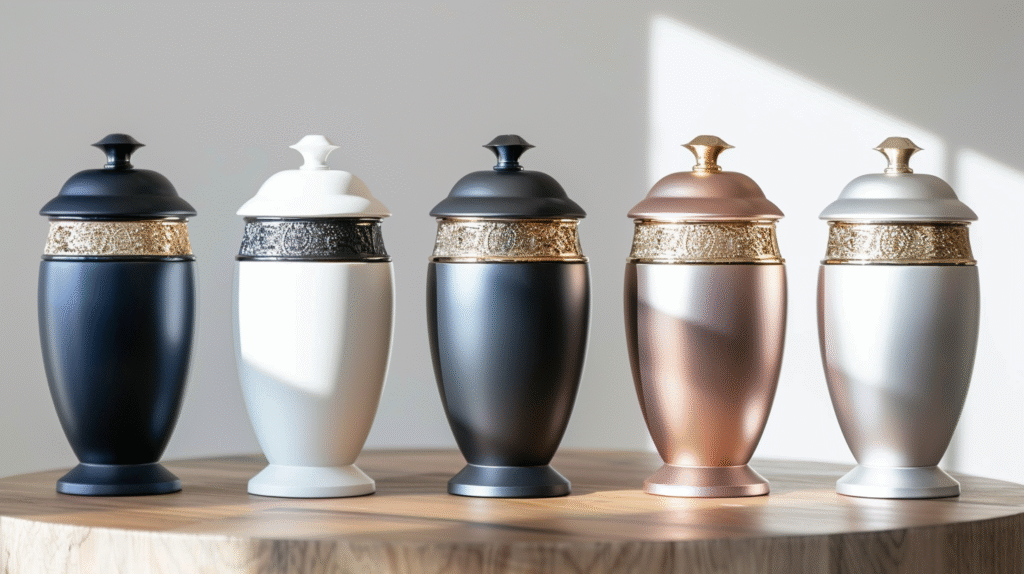
7. Urns and the Ritual of Grieving
Urns don’t just hold ashes—they hold the rituals we build around them.
Some examples:
- In Mexico, urns are placed on ofrendas (altars) during Día de los Muertos, surrounded by marigolds and candles.
- In Hindu funerals, ashes are kept in urns before being released into sacred rivers.
- In modern Western practices, families may bury, display, or even scatter ashes from a biodegradable urn during memorial ceremonies.
These rituals give us space to process grief, celebrate a life, and say goodbye in our own way.
The Emotional Afterglow: What Urns Give the Living
Yes, urns carry cremation ashes—but they give the living something else entirely:
- A sense of closeness
- A place to speak to
- A symbol of survival, love, and shared history
Grief doesn’t end. But when families choose an urn that feels right, something settles. “We finally felt at peace,” one family told us after placing their father’s urn beside his garden bench.
Urns, at their deepest level, are not about death. They are about life remembered.
Final Thoughts: Why Symbolism Matters Now More Than Ever
In a fast-moving world, the ritual of selecting an urn slows us down. It reminds us that grief is sacred. That a life deserves honoring. That even in death, we can choose beauty, memory, and connection.
At Dei Gratia Urns, we believe that the urn you choose will say more than words ever could. Whether it’s classic brass, modern marble, or a handmade keepsake, the symbolism it holds is yours—and eternal.
Because in the end, urns don’t just hold ashes.
They hold us.
